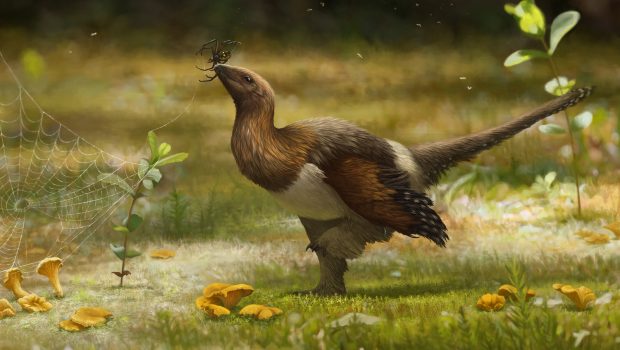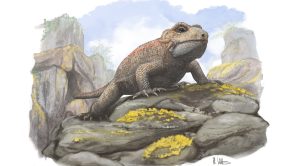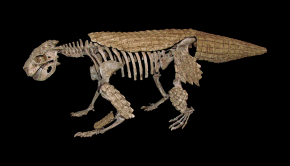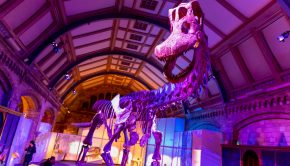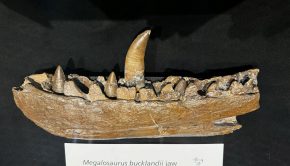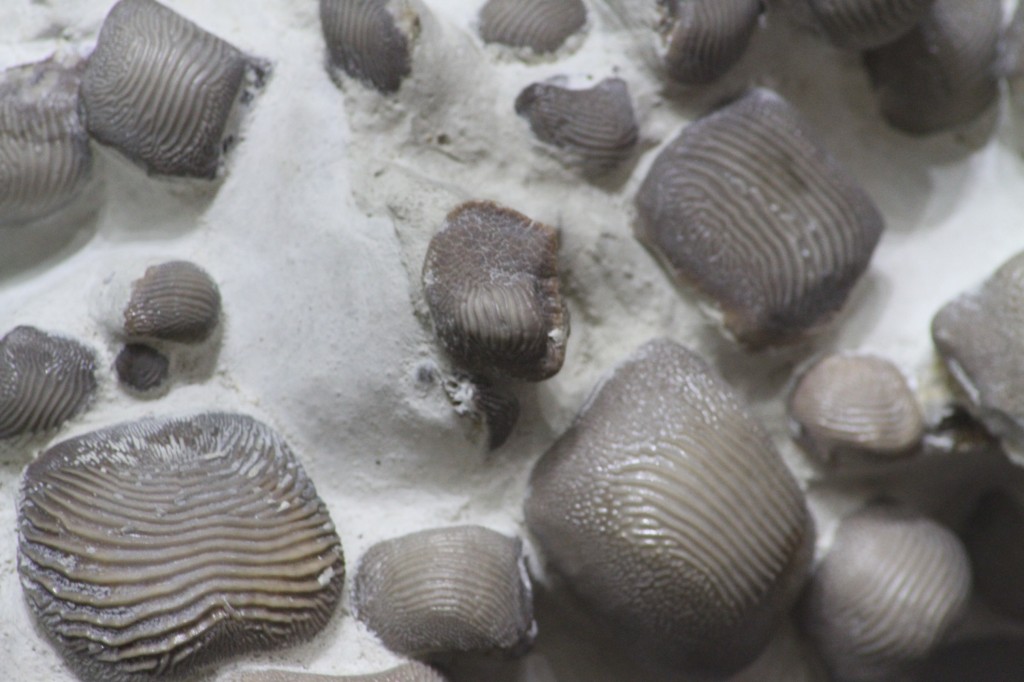Episode 133: Drawing and Painting Dinosaurs
It can be argued that palaeoart is the single biggest hook for getting people interested in prehistoric life. It takes the complex scientific terminology and data found within the academic literature and translates it into a reconstruction of an extinct organism. It is only through palaeoart that we can visualise some extinct organisms (particularly the vertebrates, and dinosaurs in this instance, whose external tissues are rarely preserved as fossils) and show some of the behaviours they might have possessed. Any kind of reconstruction that attempts to accurately depict an extinct organism as a living one could be considered palaeoart and this covers all forms of media, from traditional painting, to animation, 3D models and even how skeletons are posed in a museum.
In this episode, we speak to behavioural geneticist and palaeoartist and Dr Emily Willoughby, University of Minnesota. We take a look at what palaeoart is, how to go about making your own artwork and the release of her new book ‘Drawing and Painting Dinosaurs‘.
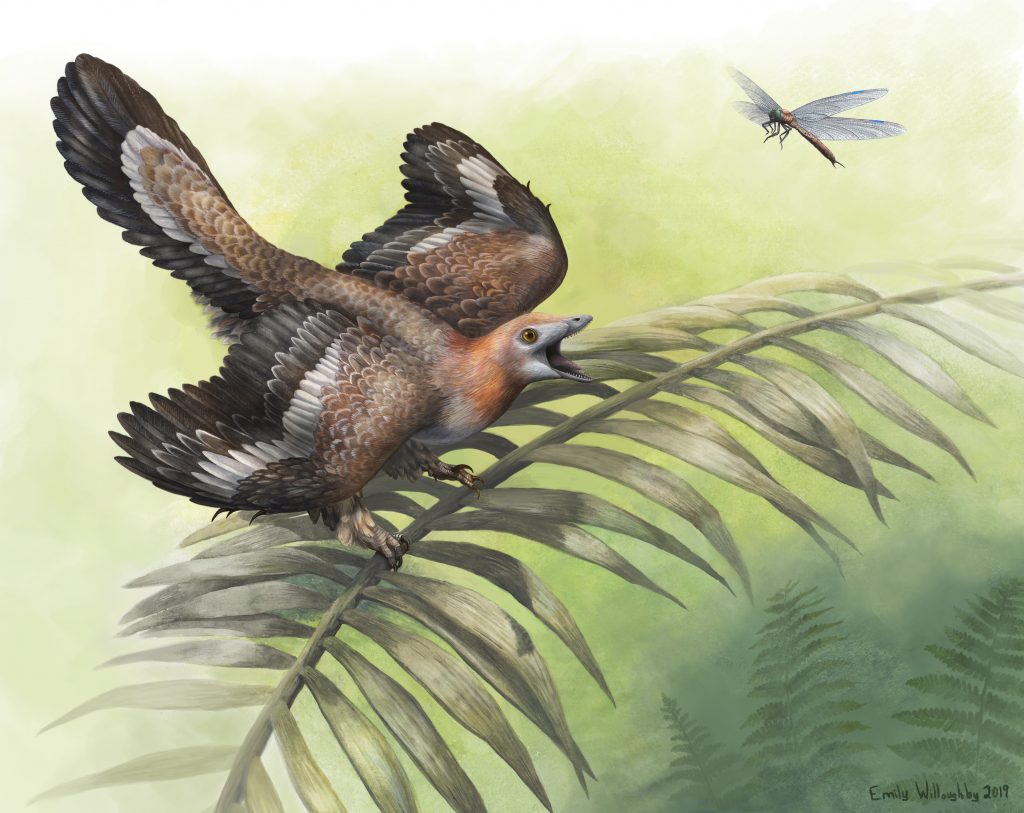
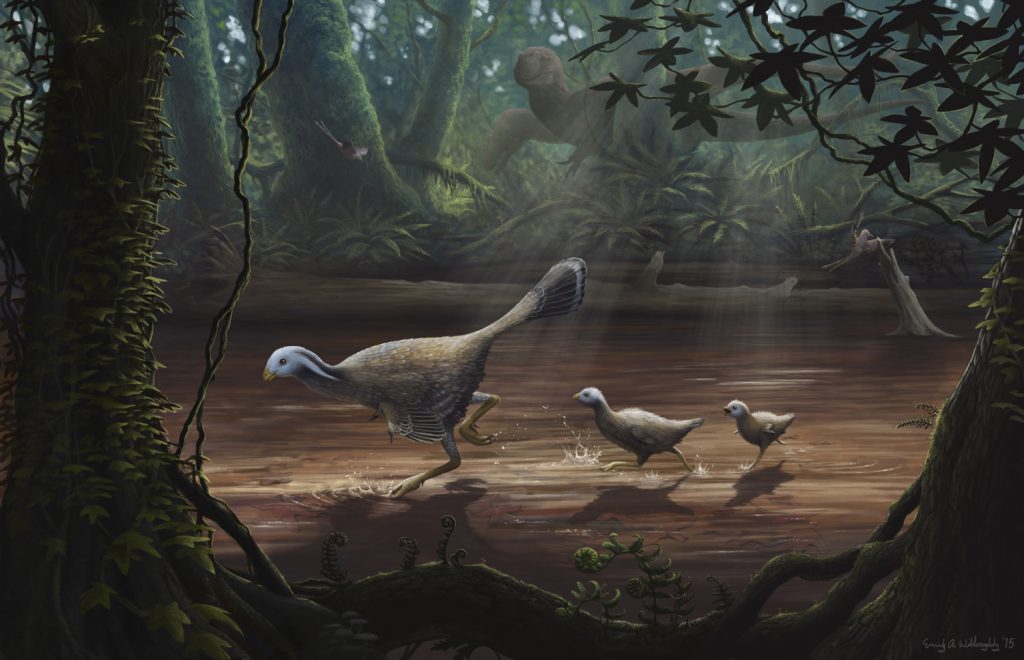
This snapshot from the Early Cretaceous Yixian of Liaoning, China, depicts a Caudipteryx zoui mother and her two chicks darting across a shallow riverbed to the safety of denser cover beyond. In the background, a pair of shaggy tyrannosauroid Yutyrannus try to decide if they ought to be interested, and a pair of Changchengornis, a confuciusornithid basal bird, glide by. Together, the three genera represent a wide span on the continuum of feathered dinosaurs and of feather complexity: from hulking, filamentous carnivore, to ground-bound, display-feathered oviraptorosaur, to flight-capable bird.
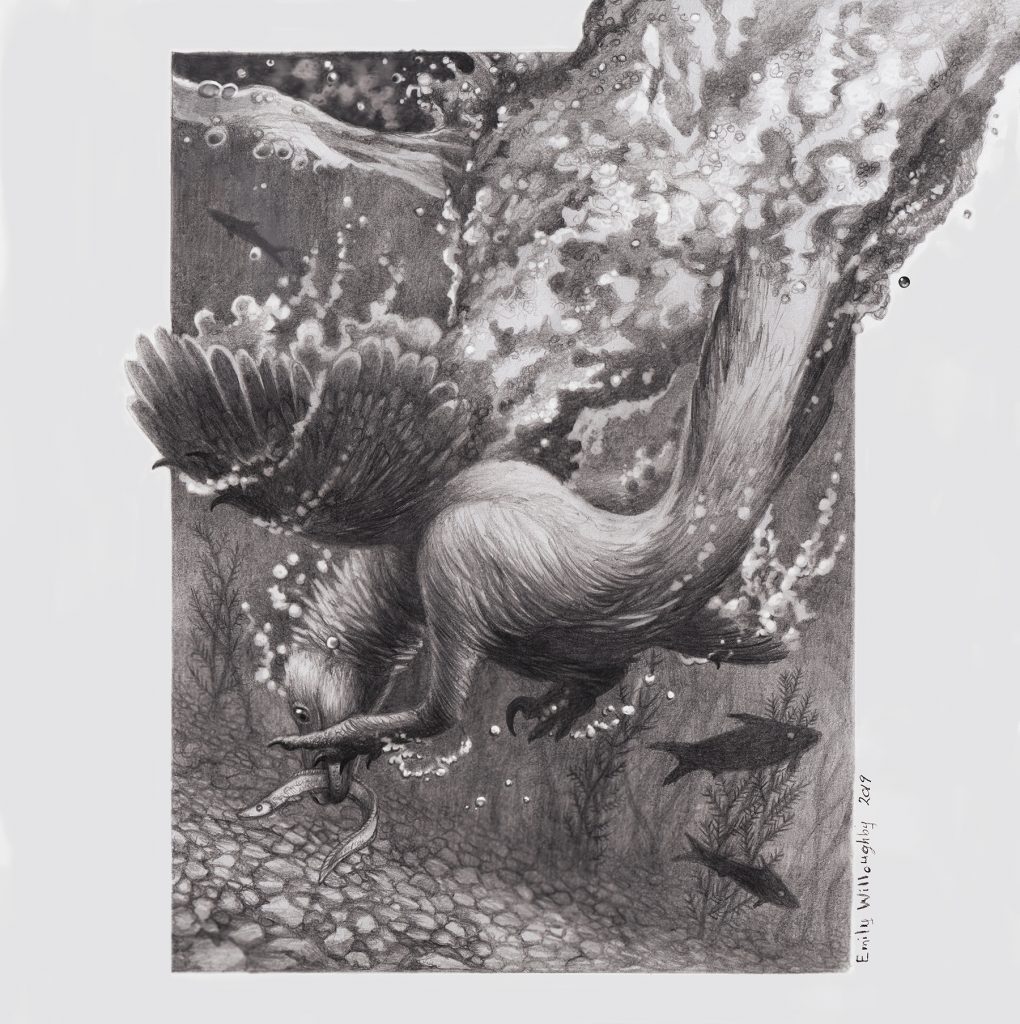
“I imagine Deinonychus as a highly opportunistic predator that would’ve attempted small prey whenever possible, much like modern wild canids and felids. Here it crashes into shallow water to snatch an eel.”
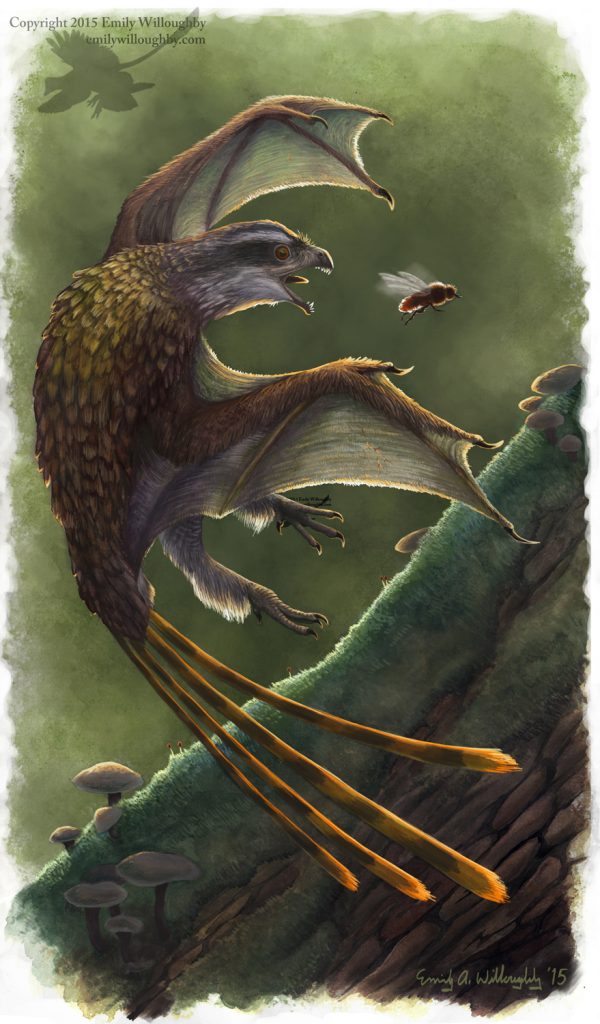
“2-day gouache painting of Yi qi, the bizarre membrane-winged scansoriopterygid. I wanted to see what the membrane would look like attaching further down on the body than in nearly every depiction I’ve seen so far, which show it attaching on the flank or at the armpit. I can’t get behind a leg-attachment point for this critter; it makes more sense to me that a long-legged animal would want its legs free and flexible. If a sprawling mobile hip-joint can be established for scansors, I’d potentially change my stance on that. Anyway, here’s a semi-new interpretation amidst a flood of recent restorations.
I’m definitely not convinced of powered flight for this critter, so here it is in an extended leap onto a log in pursuit of a Tiaojishan archisargid fly, Calosarugus.”
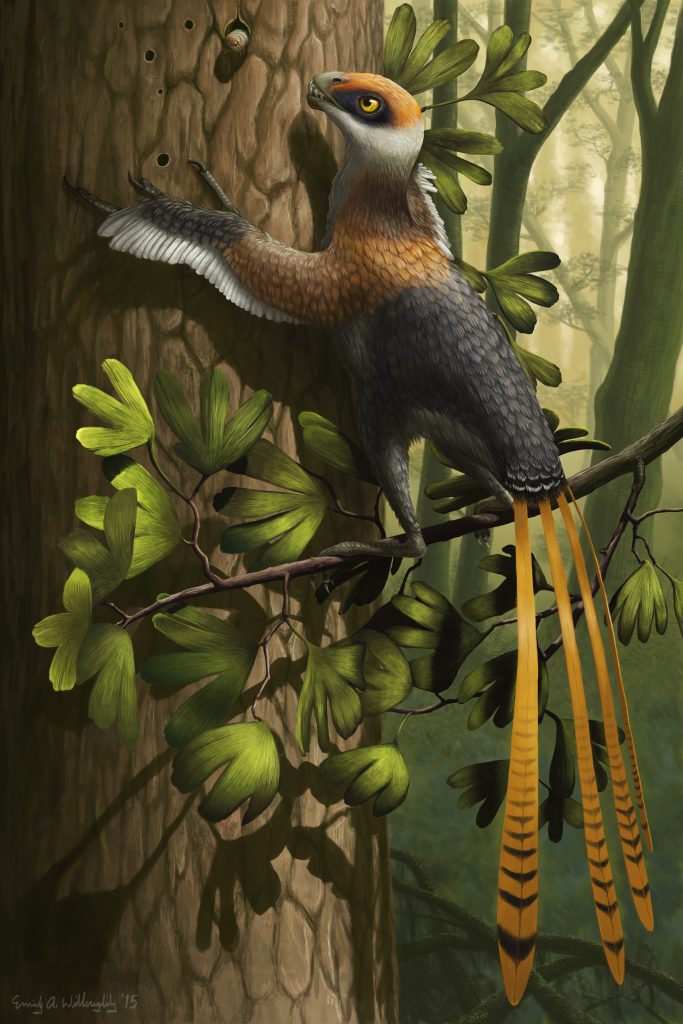
“[this painting] was researched, started and finished before the discovery of Yi qi, which may have rendered the wing feathers depicted in the painting as inaccurate. This painting was actually finished very shortly before the announcement of Yi, which caused some difficulty in the decision about whether to change the arms. However, as you can see from my eventual depiction of Yi qi itself, I would not have been happy with merely replacing the remiges with membranes—a large portion of the animal’s body structure would have needed to be reinterpreted in order for me to be satisfied with its depiction as a real animal that looked organic and natural. Ultimately, I opted against tacking on the membranes, and instead let its original depiction stay as-is. It may still have looked this way, though with lower probability than before the “Strange Wing” came along. Does this count as speculative paleoart, then?”
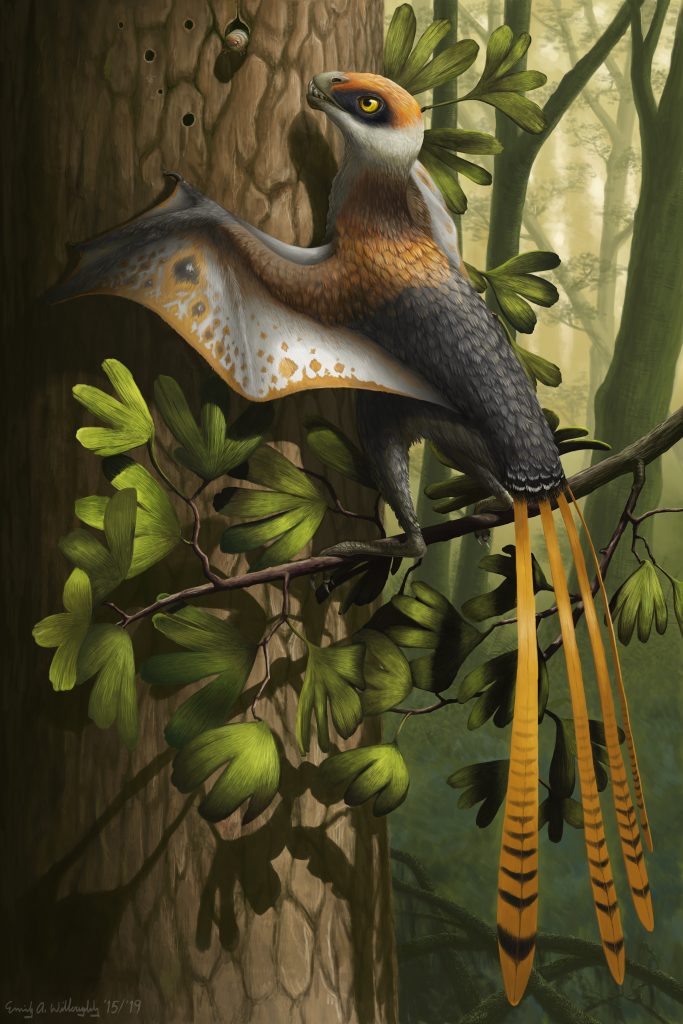
Epidexipteryx hui updated with bat-like wing membranes following the discovery of Yi qi and Ambopteryx.
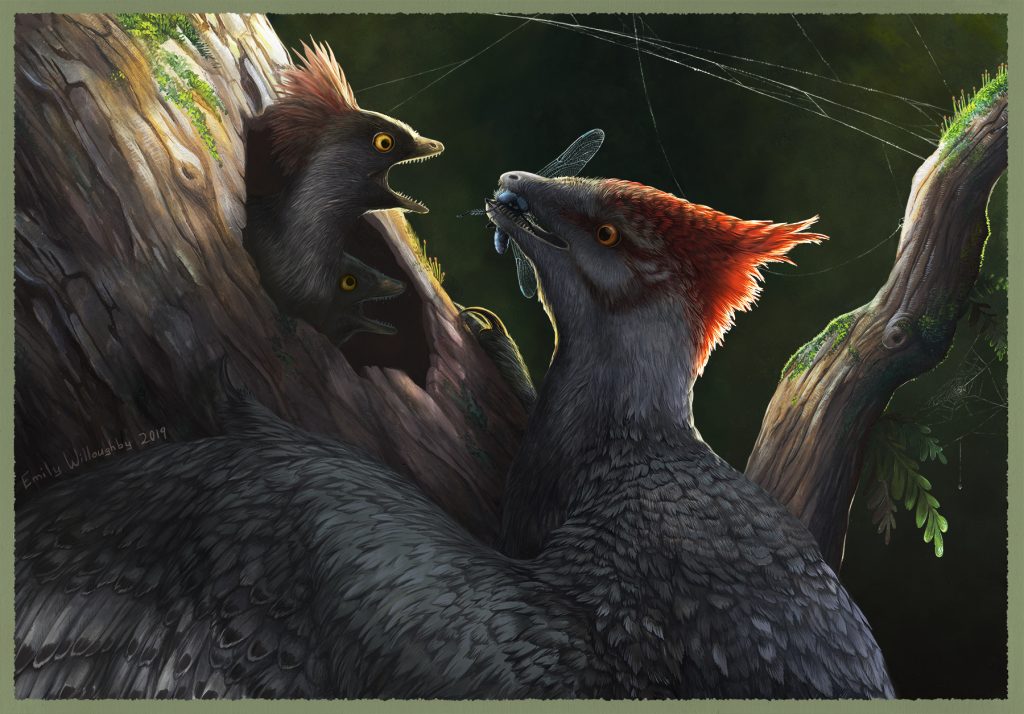
An Anchiornis father feeds its young a dragonfly breakfast. The tree-cavity nest, while speculative, is based on the typical habits of modern woodpeckers, with which Anchiornis shares a strikingly similar colour scheme.
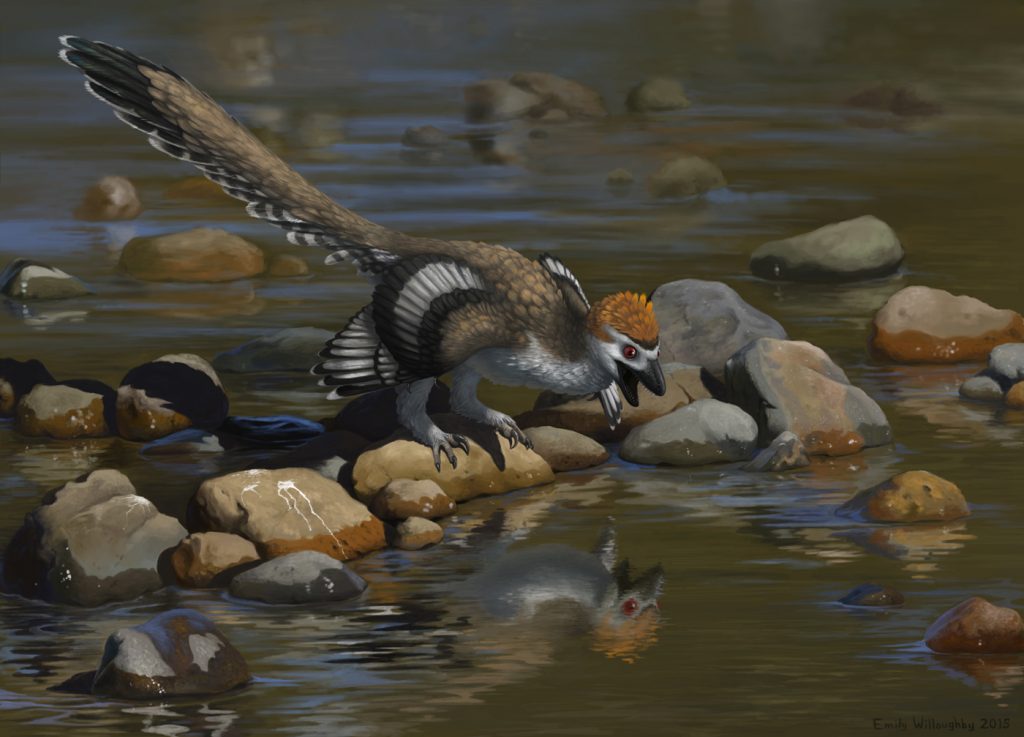
“This little fellow was about 6 feet (2 meters) long, about the size of its Velociraptor cousin, and was preserved with amazingly large and modern-looking vaned feathers on its arms and tail. Its wings are remarkably large and clearly show the same arrangement of primaries, secondaries and coverts common to modern birds. Some of these feathers even look somewhat asymmetrical, which in modern birds only exist for flying. So what on earth would a dromaeosaur this large be doing with wings like this, when it obviously couldn’t fly?
Nest brooding, RPR, wing-assisted incline running are all possibilities, but the authors speculate that their most likely function was in display or signaling, either in courtship to impress mates, or to intimidate rivals. But all sorts of dinosaurs have been drawn displaying at rivals and females dozens of times, so I wanted to illustrate a somewhat unique idea inspired by my dad’s encounter with a cardinal last summer.
This male cardinal would come to the same sliding glass door every day and try to attack his own reflection, beating his wings against the glass, pooping all over the porch and window, and generally being full of testosterone and ire. Glass and mirrors are unnatural and therefore it’s not too surprising that an animal could be confused by them, but water? Unlikely, but let me paint the scenario:
This male Zhenyuanlong, when competing for a female, has just been forced to back down by a male with a better display. He’s feeling rather out of sorts. Hopping across some rocks in a river, he catches sight of that bright orange crest and those striking high-contrast shocks of black and white in his reflection. On some level he knows it’s not real, but seeing them just makes him so damn mad. Next thing he knows he’s fuzzed up in full display, seething with rage and crapping all over the place. He’ll show that bouncing light who’s boss!”
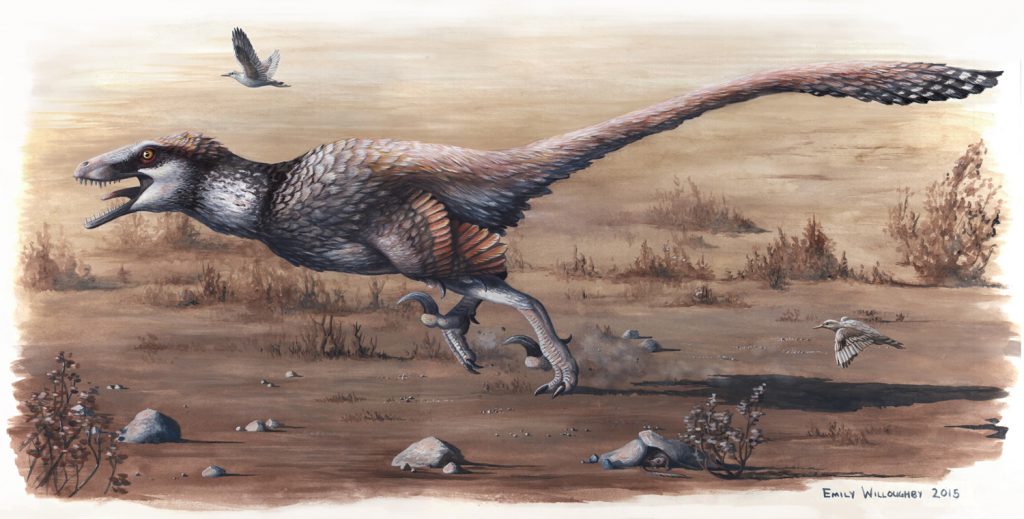
“Meet Dakotaraptor, the giant dromaeosaur from Hell Creek! This is the first giant raptor known from this formation, and—more significantly, in my view—the first giant raptor with robust, obvious, unmistakable quill knobs. At over 16 feet in length, this magnificent fellow was in the upper size range for Utahraptor, though very differently proportioned: where Utahraptor is stout and muscular, Dakota was lanky and lithe, like a scaled-up Deinonychus. Here I’ve shown it alongside the early shorebird Cimolopteryx for scale.”
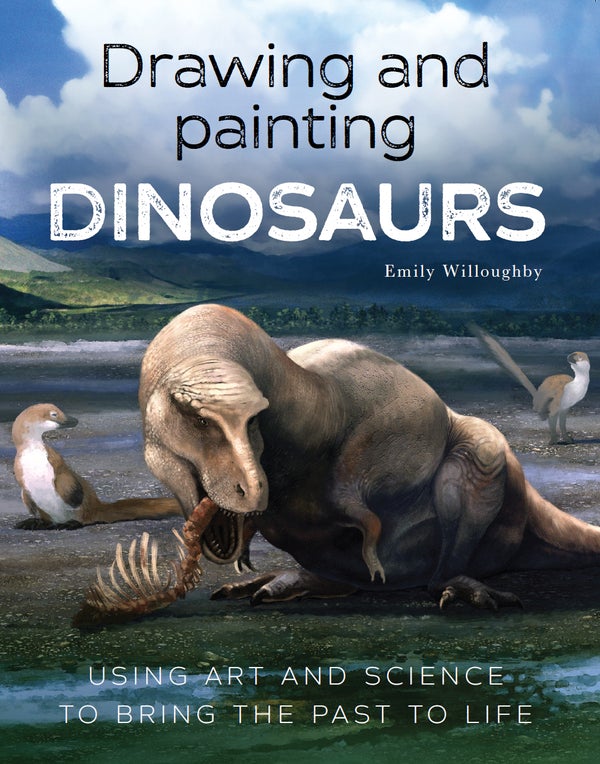
Unless otherwise stated, all images are courtesy and copyright of Dr Emily Willoughby

